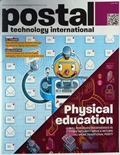- Home ›
- In the News ›
- All Change
All Change
Postal Technology International: In the move to digital mail, postal services worldwide are stepping into the role of trusted third parties, providing communication logistics themselves. What are the standardization, legal and logistical implications? Walter Trezek makes everything clear.
In the lead up to full liberalisation of the European market for postal services, most operators have understood that the markets upstream and downstream of the core postal service provision will be key to their future.
In a process that has run parallel with the opening up of the postal market in Europe, the way in which society communicates has changed fundamentally over the past 10 years. Postal services, which provide the national, regional and global infrastructure for exchanging letter and parcel post items, are fundamentally affected by this change.
Postal service provision, the global nature of the postal network, the legal framework for postal services, relationships between postal service providers, as well as designations by global postal community members, must all adapt, restructure or risk being replaced.
“Globally, postal operators were quick to understand that hybrid mail was a paradigm shift”
Analogue to hybrid
Letter post provision emerged in the nineteenth century. One might say that it was an indicator of society’s stage of development.
Fundamental human rights, such as the integrity and privacy of a letter post item, were enshrined in every nation’s postal law by the convention of the Universal Post Union (UPU). A society’s development and wealth creation could be directly measured by the growth in volume of letter post items and communications.
The traditional postal service provision was developed to meet the need for a secured infrastructure for the exchange of physical postal items – letter post items up to 2kg in weight and parcel post items up to 31.5kg. A Universal Service was created to ensure global access, by designating national providers for every country worldwide. The content of every item was legally safeguarded, with any breach of the privacy or integrity of a postal item by postal service personnel being punishable under rule of law.
For governments, the postal infrastructure is still the communications backbone worldwide, allowing them to reach all their citizens, wherever they are. In most countries postal addresses form the basis for advanced government. Until only recently, access to postal networks was as important as access to digital and mobile communications is now.
Parallels with today’s world are obvious. The overwhelming success of email, and even more so that of social and mobile media, have led to a decline in physical mail volumes and – even more importantly – a substitution of postal service provision with other means of communication. In the European Union it is governments themselves that have driven forward this development, by pushing new digital service provision that enables them to communicate in a secured and trusted way with their own citizens.
However since 2008 the picture has changed considerably.
The UPU laid the foundations for extending the postal service provision into the internet and the European Commission, mandating the creation of standards in the CEN (European Committee for Standardisation) actively ensured that the spirit and aim behind liberalizing the European market for postal services was not jeopardized by new and exclusive areas dedicated to the incumbents. The CEN – through its Technical Committee 331 ‘Postal Services’ (CEN/TC 331) – ensured equal and non-discriminatory access to hybrid postal services and in addition converted UPU technical specification into CEN format.
Hybrid mail, as defined by CEN/TC331, is an electronic-based postal service. The sender posts the original message in either a physical or an electronic form and the message is electronically processed and converted into letter-post item for physical delivery to the addressee. Where national legislation permits, and where the sender or the addressee requests, the postal operator effecting the delivery may convert the original transmission received into non-physical means (such as fax, email or SMS) or into multiple means. Where delivery is physical, the information is generally transmitted by electronic means for the furthest possible distance before being physically reproduced at premises as close to the recipient’s address as possible.
Globally postal operators were quick to understand that hybrid mail was a paradigm shift. Due to the global nature of the postal network, initiatives to enable posts to bring the classic trusted nature of postmarks – the mother of all date and time stamps – into the digital and mobile age had already begun to emerge a decade ago.
Hybrid to digital
The step from a digitally composed mail piece to secured electronic distribution, whether driven by governments or postal services, is a process of evolution rather than revolution. Most would say that this evolution is due for completion sooner rather than later.
It is therefore no surprise that postal services in countries where third-party players, large enough to have an impact on the letter-post market, have decided to actively drive forward the evolution from physical mail to secured electronic mail.
CEN/TC 331 Working Group 2 has supported these developments by actively participating in converting global postal standards in this field into European Postal standards. ‘CEN/TS 15121-1 Postal Services – Hybrid Mail – Part 1: Secured electronic postal services (SePS) interface specification – concepts, schemas and operations’ and ‘CEN/TS 15121-2 Postal Service – Hybrid Mail – Part 2: Secured electronic postal Service (SePS) interface specification: Electronic Postal Certification Mark (EPCM) Service’ were finished and the decision to publish was taken in early 2011.
It is a major cultural change for posts to move upstream in the traditional postal value chain, to enter the market for output management solutions and drive what is known as ‘electronic substitution’. Whenever governments actively start to drive electronic substitution, social-demographic factors such as the younger generation, who are accustomed to new ways of communicating, kick in. The effect on letter post volumes is dramatic, yet postal services prefer to drive this substitution themselves than leave it to potential competitors with a more limited service portfolio.
The core service provision of postal providers offers a unique proposition to the two parties involved in any letter post communication – authenticity, integrity and trust. These principles are safeguarded globally by national and international laws. This is the ‘trusted third party’ concept that postal service providers use as the cornerstone for future posts. Enshrined in the postal service provision, this cornerstone of the postal service obligation was extended to include email by ‘CEN/TS 16326: Postal Services – Hybrid Mail – Functional specification for postal registered electronic mail’.
CEN/TS 16326 was also instrumental in transforming the European Telecommunications Standards Institute (ETSI) REM (registered email) standard and providing technical standardisation for any interoperability for a postal service provision extended to digital communication. E-delivery and certain aspects of electronic cross-border identification were therefore made inter-operational, supporting the evolution of the postal network, which is by definition universal and becoming increasingly multichannel.
“It is a major cultural change for posts to move upstream in the traditional postal value chain”
Finally we will also see the electronic mailbox (e-mailbox), which in the digital world will serve a similar purpose to the traditional mailbox in the physical world. One might argue that everyone online already has an e-mailbox, but currently they are not quite the same as a traditional mailbox – the legal obligations associated with a physical mailbox are not yet valid for e-mailboxes.
However posts globally are now going through the evolutionary process of adopting the concept of secured electronic mailboxes. All these developments are based on international standards and principles that aim at establishing global SePS networks, parallel to the physical networks that were established by postal service providers around 125 years ago and which have been maintained ever since. The concept of a postal electronic mailbox was enshrined in the UPU’s letter post convention of June 2011. A postal electronic mailbox enables the sending of electronic messages by an authenticated mailer, delivery to the authenticated addressee, and access, management and storage of electronic messages and information by the authenticated addressee.
To ensure the equal and non-discriminatory access to reverse hybrid postal services, CEN/ TC331 WG2 started work on standardizing the processes and technologies already in use. The work will be carried out in 2012. Results and first drafts will be ready by the end of 2012.
Communication logistics
As delivery of mail and addresses (sender and recipient identification) becomes multichannel at the national and global level, postal services are finding themselves in the role of trusted mediator yet again. This becomes even more important as personal and sensitive data, profiles and preferences all need to be protected, authenticated and secured. Data has become the great new commodity in a market-driven economy.
Just as the standard postal address is core to several levels of postal ‘in-person-proofing’ services offered by most postal service providers today, whether for secured delivery, first class or second class mail, parcel services or postal financial services, so user identification and authentication are essential if many cross-border services are to become successful and secure.
Neither individual identities, nor preferences and profiles, should ever have to be compromised. What is needed is a trusted broker, one who manages identities, profiles and even preferences on behalf of all the parties involved, ensuring that fundamental rights are protected. Postal services worldwide have understood this need and are stepping into the essential role of trusted third party, providing the necessary communication logistics themselves.
Walter Trezek, Postal Technology International, June 2012
Walter Trezek is the Chairman of the Consultative Committee (CC) of the Universal Postal Union (UPU).
- Home ›
- In the News ›
- All Change
Does this article cover a topic relevant to your business? Access the CLS Business Lounge for the market intelligence you need to stay ahead of the crowd. Find out more



